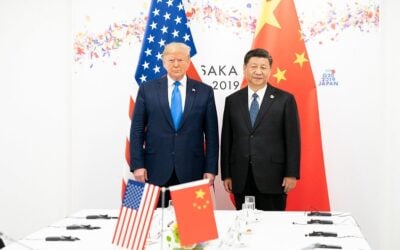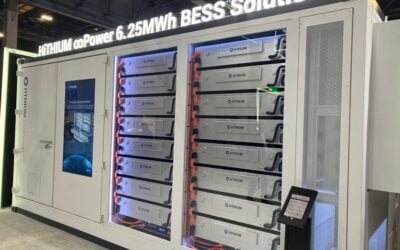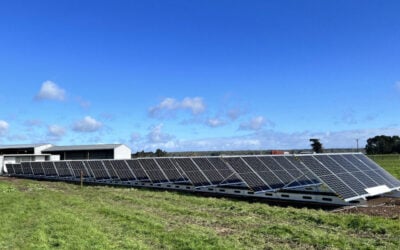Containerised storage at Sungrow-Samsung’s Tibet microgrid. Image: Sungrow.
Turnkey energy storage system provider Demand Energy has commissioned a solar-plus-storage microgrid in Costa Rica at a medical manufacturing facility.
The company, which has also recently announced a microgrid at a low-income housing complex in New York for utility Con Edison, has already completed the 500kW/1MWh battery storage system at Establishment Labs’ facilities. It is paired with a 276kW solar PV array.
Demand Energy worked with Rio Grande Renewables, a US-headquartered company with a track record of developing a handful of projects in Latin America and the Caribbean. The microgrid provides multiple services, which include assisting the grid. Behind-the-meter it reduces peak demand and ‘smoothes’ out variable solar energy output for effective onsite self-consumption as well as being a source of backup power in the case of outages.
The microgrid, claimed to be the largest in Central America, runs on Demand Energy’s Distributed Energy Network Operating System (DEN.OS), which will also be used for the New York microgrid. It will enable Establishment Labs to cut power costs through peak power reduction while maintaining stability of supply – essential for the facility’s manufacturing processes. It will also enable Establishment Labs to reduce its reliance on diesel.
Enjoy 12 months of exclusive analysis
- Regular insight and analysis of the industry’s biggest developments
- In-depth interviews with the industry’s leading figures
- Annual digital subscription to the PV Tech Power journal
- Discounts on Solar Media’s portfolio of events, in-person and virtual
“The system eliminates the stranded costs of traditional diesel generators while offering a healthy return on investment through optimizing renewable solar generation, which drives a reduction in GHG emissions that supports Costa Rica’s goal to be the world’s first carbon-neutral country,” Shane Johnson, vice president of operations for Demand Energy said.
“This new generation of microgrid technologies is a game-changer in the region,” Rio Grande Renewables’ president Brian J Schmidly said.
“They are not only cleaner than traditional grid electricity and diesel generators, but they’re also more affordable now than in previous years. We expect to see demand for microgrids grow as customer awareness increases and the benefits are clearly demonstrated.”
Sungrow-Samsung completes large-scale Tibet microgrid
In other microgrid news, earlier this month inverter maker Sungrow, which has a tie-up with battery manufacturer Samsung SDI, said it completed a solar-plus-storage microgrid in Shuanghu, Tibet, China, which has 23.5MWh of lithium-ion batteries.
First reported in October, the plant uses 13MW of PV inverters and 7MW of energy storage inverters and is in one of the highest-altitude regions of the world. It is aimed at providing some 6.6 million kWh of power to 14,000 local residents, whose use of energy previously was restricted to whenever their shared use of diesel generators allowed them to.
Sungrow-Samsung installed standardised container solutions at the site, which suffers severe winds and frequent low temperatures of as little as -40 degrees centigrade. Sungrow claims the system should be able to start up even in this climate without trouble. It can also be remotely operated and monitored.





